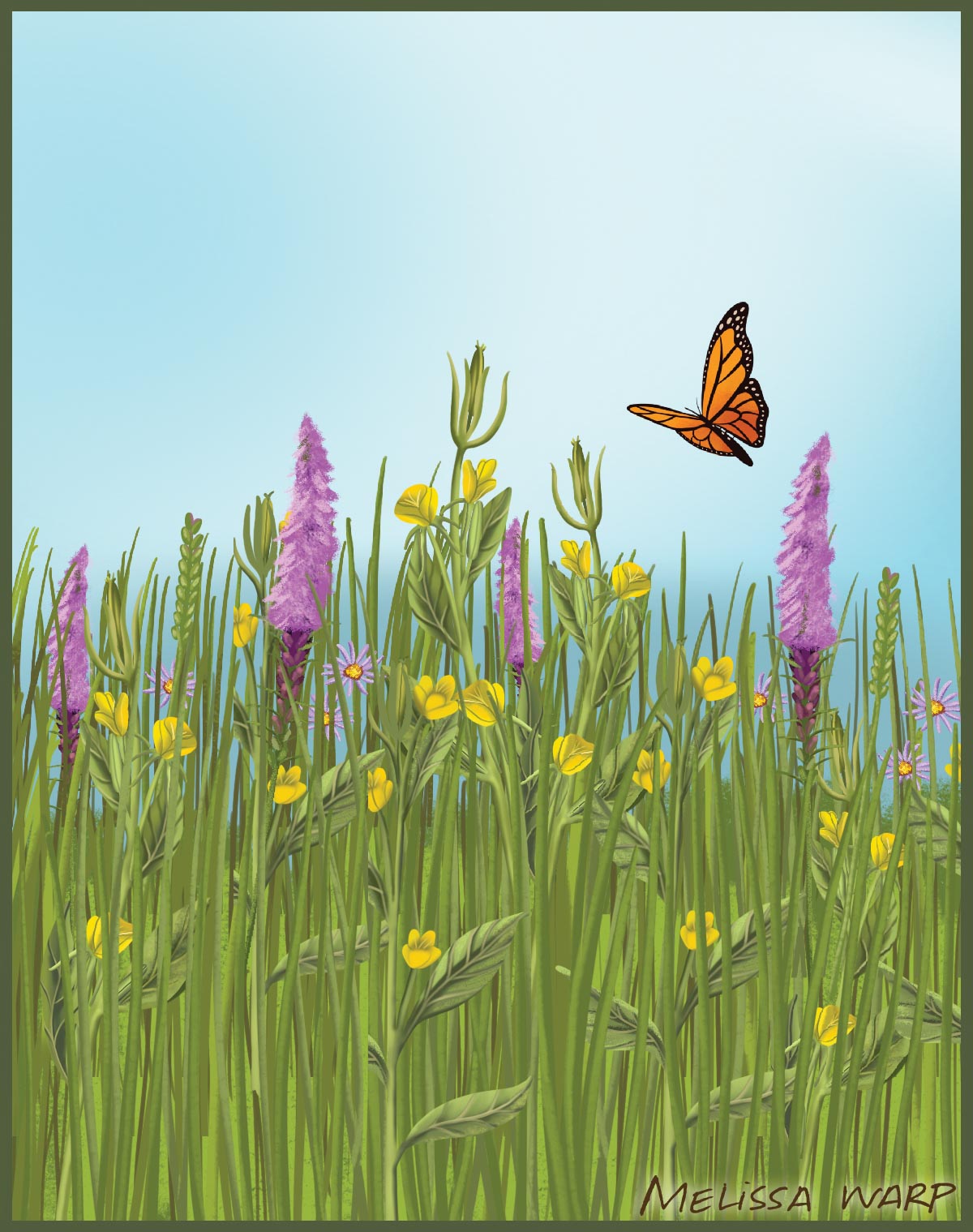Seeds of the past, sown for the future

A SCENIC VALLEY THAT CRADLES Roundstone Creek in Hart County northeast of Mammoth Cave National Park seems the perfect setting for a native seed center that is helping restore native grasses and other foundation plant life of centuries past to thousands of acres across the country.
From little bluestem, big bluestem, switch grass, spiked blazing star and dozens of other species that blanketed the prairies and tall grass savannas of pre-settlement Kentucky, Roundstone Native Seed’s catalog offers more than 250 varieties of prairie and woodland plants and wildflowers.
Roundstone founders Randy Seymour and his son, John, both longtime consumer-members of Farmers Rural Electric Cooperative, never imagined today’s success in 1995 when, armed only with two 5-gallon buckets, they began hand-stripping seeds from a natural stand of Indian grass in one of their fields to assist The Nature Conservancy with restoration of prairie remnants.
“It just, by word of mouth, took off,” recalls Randy, 78, who credits John, 48, with guiding the business’s remarkable success. But John insists it didn’t happen overnight.
“From the time we first picked, it was three years before we ever sold the first seed. It just takes a long time to get seed from the wild to make it commercially available,” he says.
Today, Roundstone is among the leading suppliers of native seeds in the eastern United States. It has a fleet of 17 combines or other harvesting machines, large seed cleaning and storage facilities, 32 full-time employees at its 2,000-acre farm in Hart County and other farms on contract that grow and harvest seeds in seven other states.
Among its many clients are East Kentucky Power Cooperative, which has supported Roundstone since its beginning; as well as national parks, highway projects, solar power installations, commercial landscapers, mine reclamation sites and a growing number of backyard habitat and monarch butterfly projects.
John is hopeful of adding other foundation plant varieties, including Cherokee white eagle corn, a surviving remnant of corn carried westward by members of the Cherokee Nation in its tragic, late-1830s government forced relocation known as The Trail of Tears.
Randy Seymour, who has authored a number of long-term botanical studies, partnered with his friend and mentor, botanist Julian Campbell of Lexington, several years ago on a survey of plant life in Mammoth Cave National Park, and wrote the book, Wildflowers of Mammoth Cave National Park, (University Press of Kentucky).
His lifelong interest in native plants traces to early childhood walks with his mother, Myrtle Barbour Seymour, who instilled in him a fascination with the plants and wildflowers she stopped to show him in the meadows and woodlands around their Hart County farm. Now, the family’s passion for native plants continues.
“It’s become a labor of love,” says John, whose children work with Roundstone.
“I never got to see a prairie in Kentucky,” Randy tells me, “but John is in fact bringing some of that back with what we’re doing. And that truly is the highlight of my life right now.”
Learn more at www.roundstoneseed.com.
BYRON CRAWFORD is Kentucky’s storyteller—a veteran television and newspaper journalist known for his colorful essays about life in Kentucky. Contact Byron at KentuckyLiving.com: About/People.

